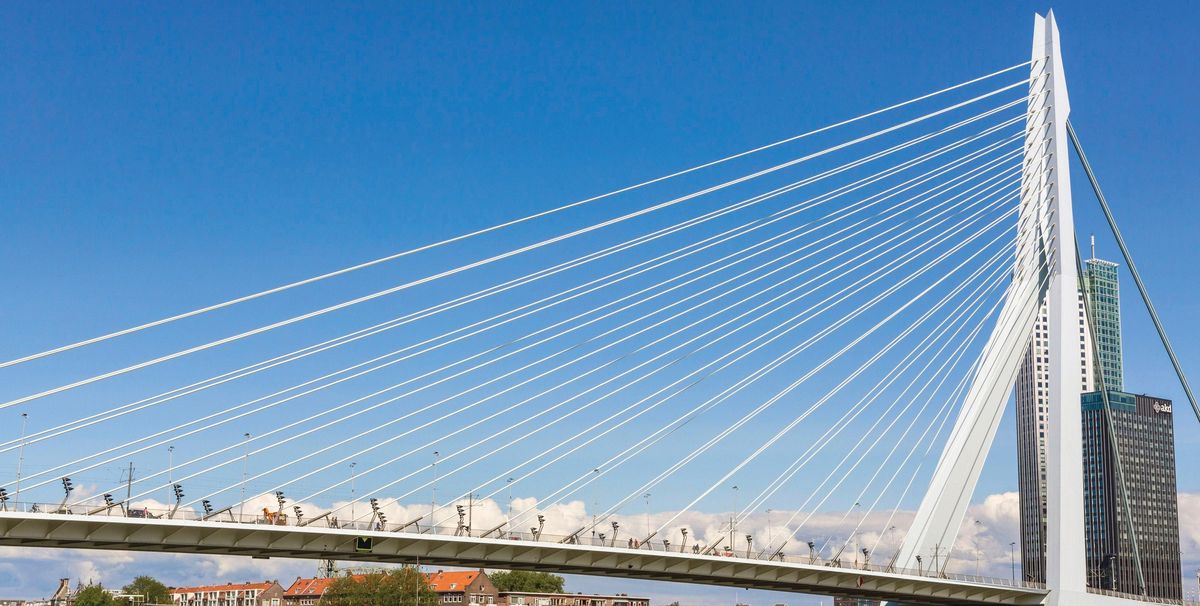The Scottish artist Susan Philipsz has used water-filled glasses to recreate a late Renaissance melody.
Every evening at sunset, people walking underneath the Erasmus Bridge in Rotterdam may hear the melancholic strains of a late Renaissance lute song.
The music is part of the Seven Tears installation unveiled in March by the Turner Prize-winning artist Susan Philipsz.
She used Pavane Lacrimae, a song by the Dutch composer Jan Pieterszoon Sweelinck (1562-1621), who adapted it from a celebrated seven-part piece for lute and voice called Flow, my tears, by the late Renaissance English composer John Dowland; it was published in 1600.

Philipsz recorded each of the melody’s seven tones by filling glasses of water to different levels and rubbing the rims. “By separating the tones, I was able to make the sounds stand out from the trams and tugboats and other noises under the bridge,” Philipsz says, adding that the work “ties into the watery theme of tears and being by the river”.
Dowland’s piece was widely celebrated by his contemporaries and is one of the first examples of the trend for melancholia—a popular theme of the time. By breaking down the composition, Philipsz says she was also thinking about “isolation, separation and solitude”.
A permanent installation, Seven Tears was commissioned by Sculpture International Rotterdam, which manages the city’s public art. Philipsz says: “I first started thinking about the project in 2011, so it’s been a long time coming,” adding: “Let’s hope the neighbours like it.”


